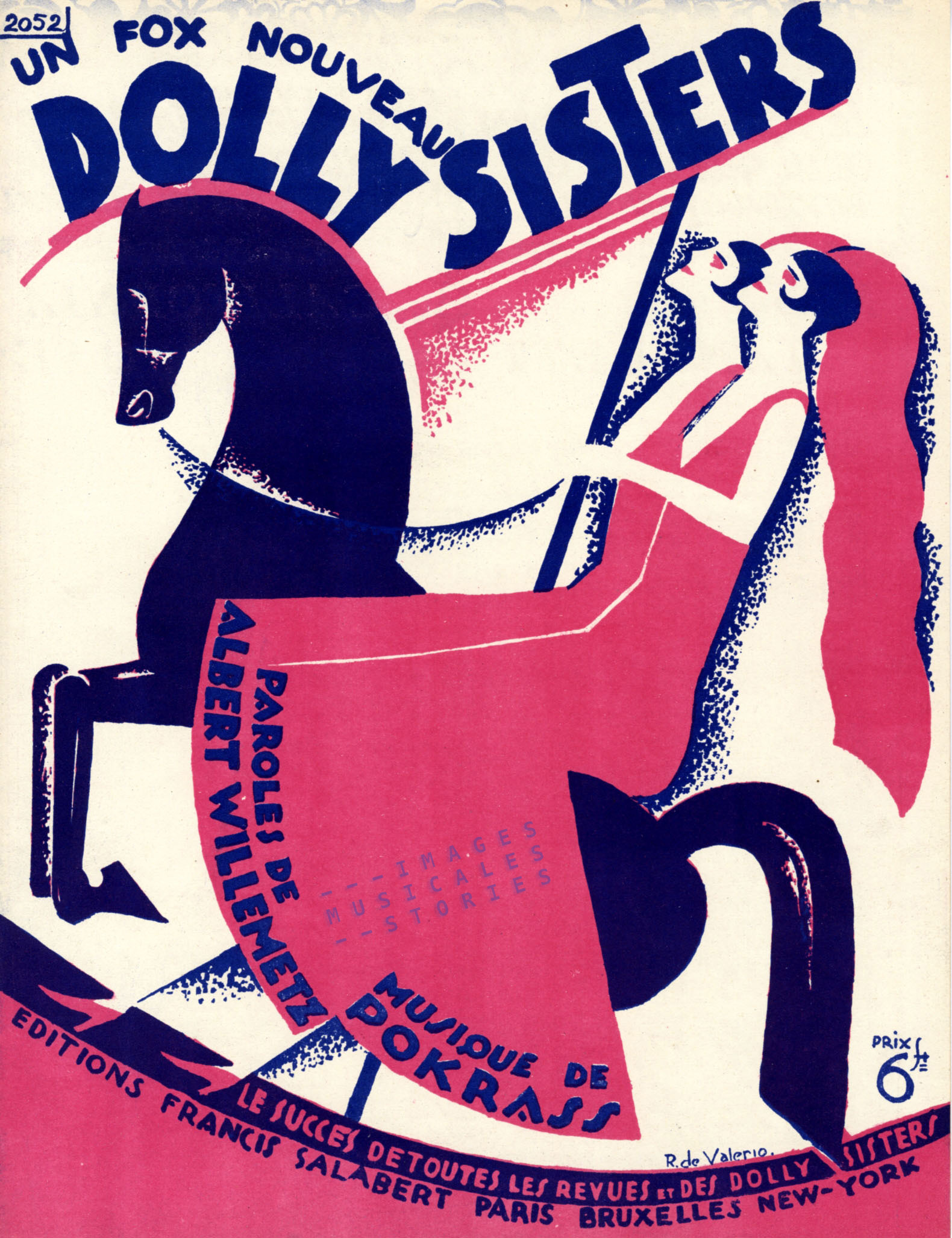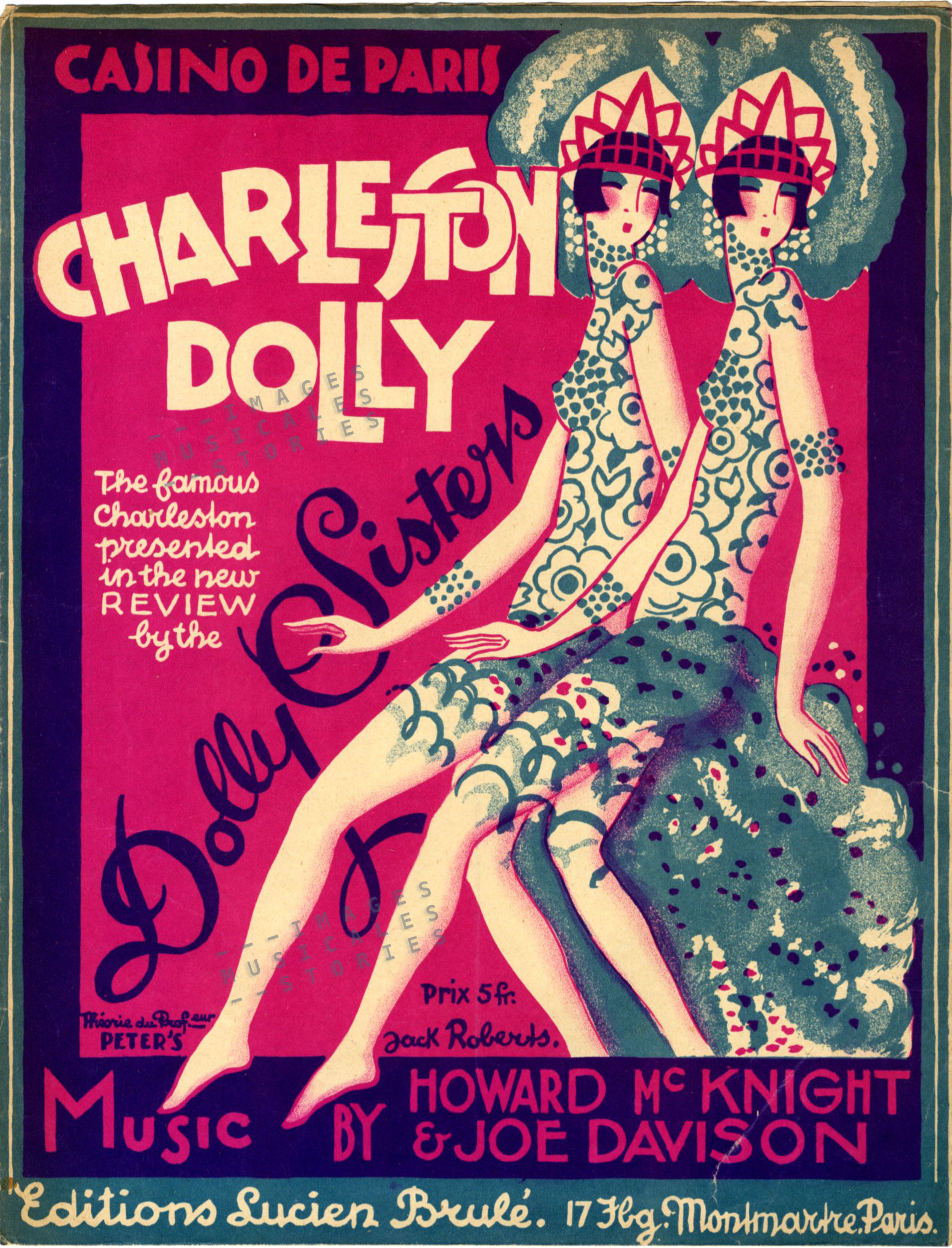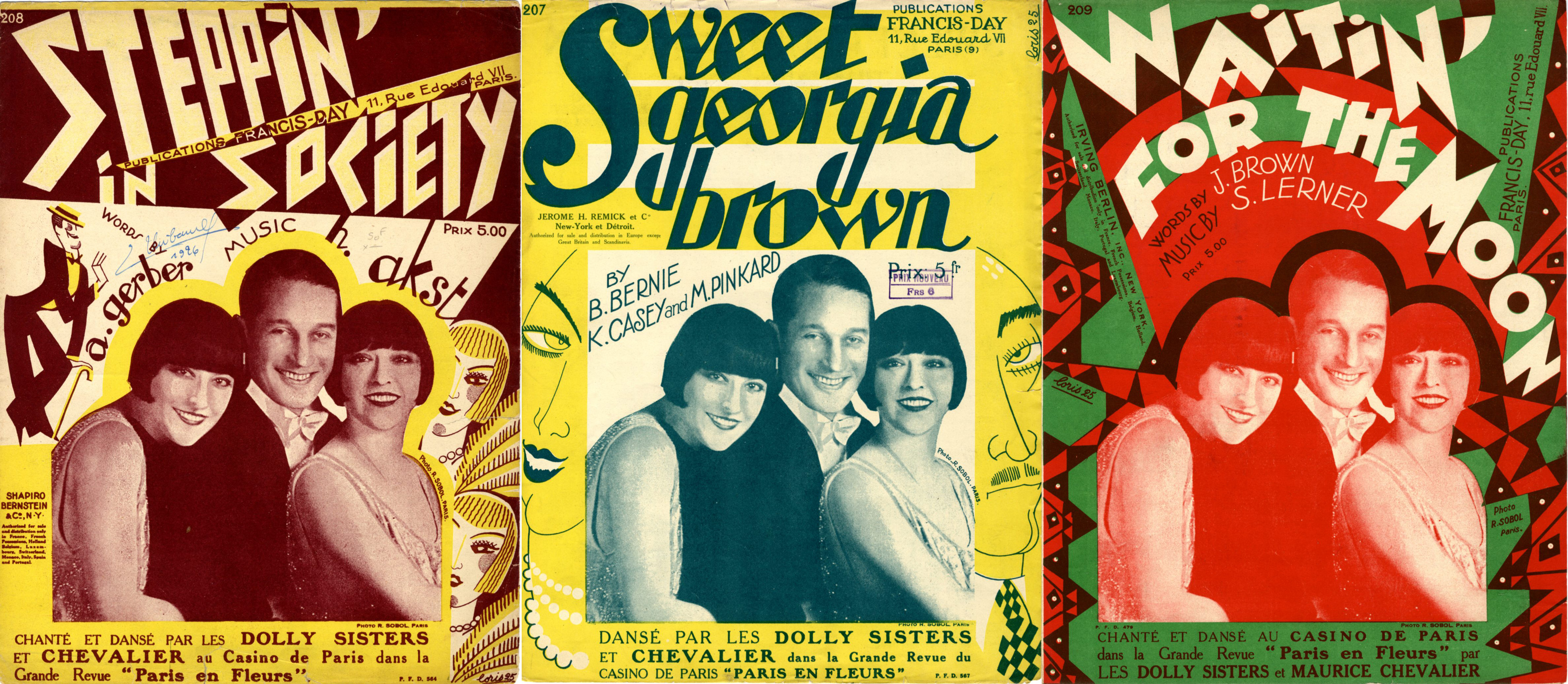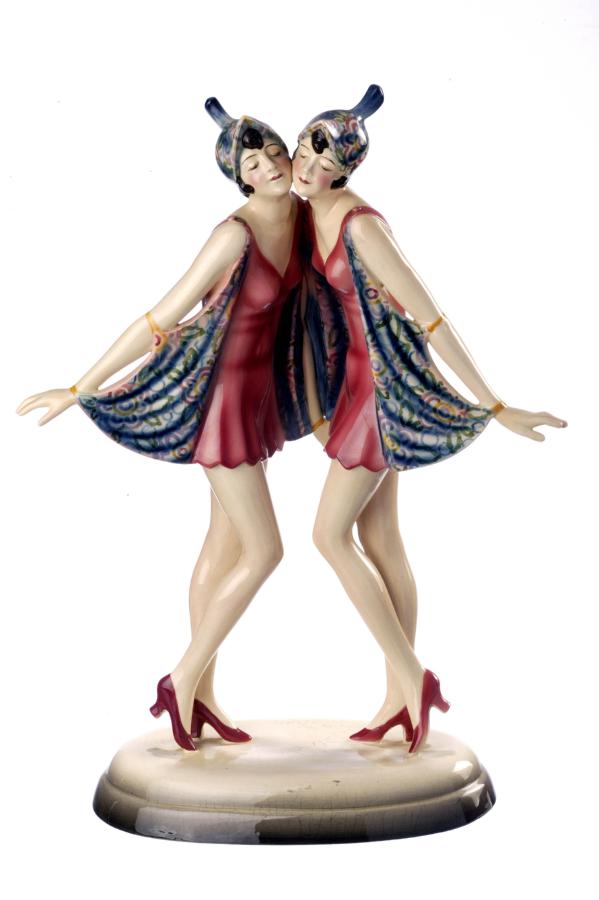

Coal-Black Mammy was written by comedian Laddie Cliff and composed by actress and singer Ivy St. Hellier in 1921. Although the author was born in Bristol (UK), he adapted the American South’s archetypical Mammy for the successful ‘Co-Optimists’ London revue.

The Co-Optimists revue combined in its name two political keywords of the time, optimism and co-operation. It was a sequence of short sketches, performed by musical comedy and variety artists dressed in pierrot costumes. The show ran for six years at the London Palace Theatre and went on tour along British seaside resorts.

In 1929 it was made into a film, co-directed by Laddie Cliff. A filmed extract from the stage musical brings the photo on the sheet music cover literally to life.
Salabert published Coal-Black Mammy in France and Roger de Valerio illustrated its cover. Mammy characters were a staple of minstrel shows, so they were certainly known in Europe at that time.

But, in picturing the mother with her own baby de Valerio proves that he did not correctly grasp the Southern archetypical meaning of the Black Mammy. Unlike the happy mother on the cover, she did not have time to care for her own children. The Mammy in these shows and comedies is a racist stereotype: usually an overweight, large-breasted, maternal woman. Moreover she is a neat and clean, domestic, non threatening to white people, and always busy attending to the needs of the master’s children. She is the one person on whom all (white people) depend when in need.
American illustrator Dorothy Dullin on the other hand, understood perfectly well how to draw a Mammy for the cover of the 1922 song Carolina Mammy: the Mammy is nurturing a white boy.
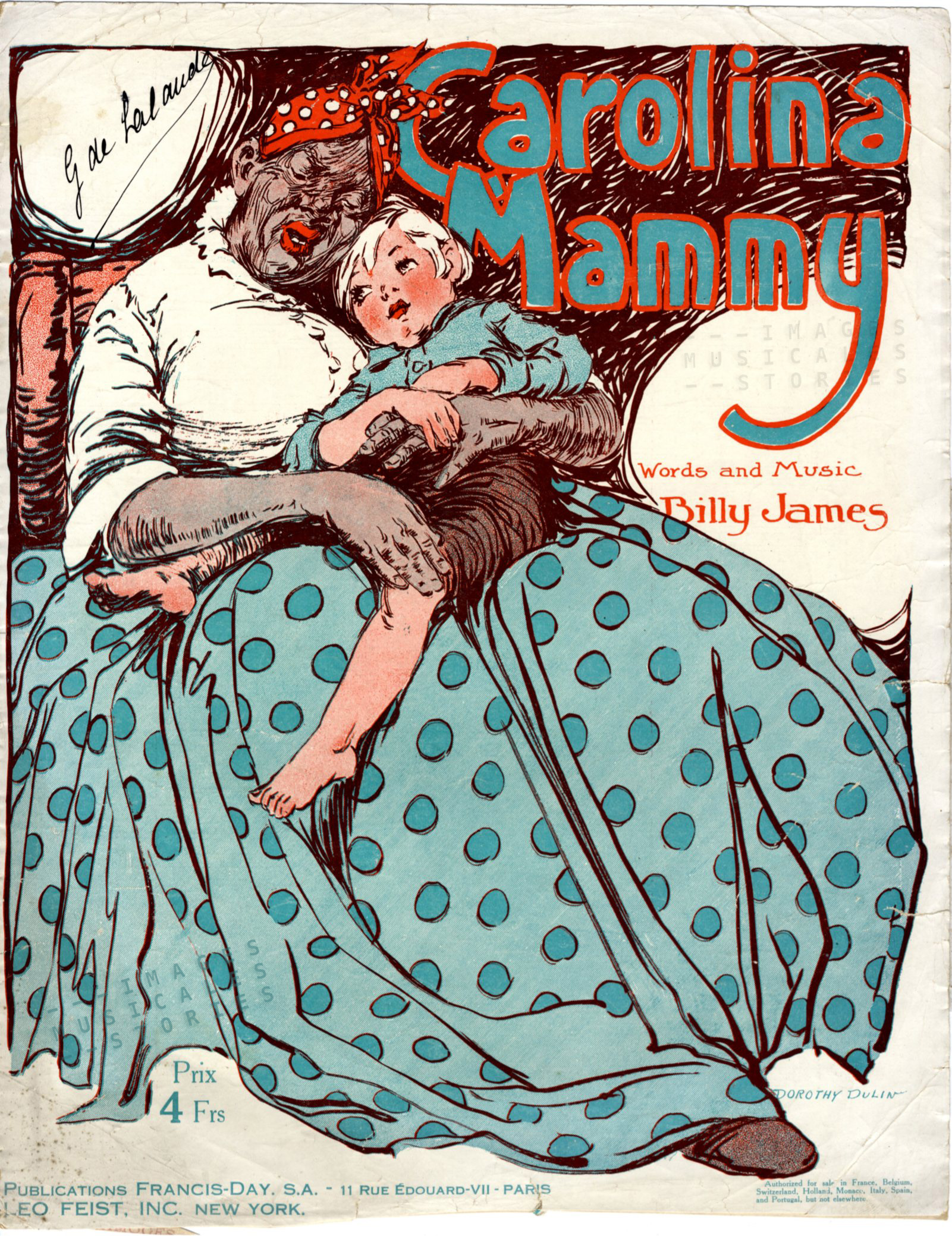
The two songs mentioned above were also performed by black face par excellence, Al Jolson. In 1927 Walter Donaldson composed the ultimate Mammy song for the film The Jazz Singer: My Mammy. The song became a classic in Al Jolson’s version. For the French edition of the song the illustrator Deléage made a strong caricature of Al Jolson’s black face character.

The persistent Mammy stereotype extended well into the twentieth century in literature, films and TV series. In the cartoon Scrub me Mamma with a Boogie Beat from 1941, we see another archetypical image of the Black Mammy, kerchief on her head. Of course the entire cartoon is the epitome of stereotyping: black men living in Lazytown, doing nothing else than, well… being lazy. It is only when a sexy light-skinned woman appears, that they jump into action to dance and play their instruments.
Or to say it with a good old sheet music cover…





